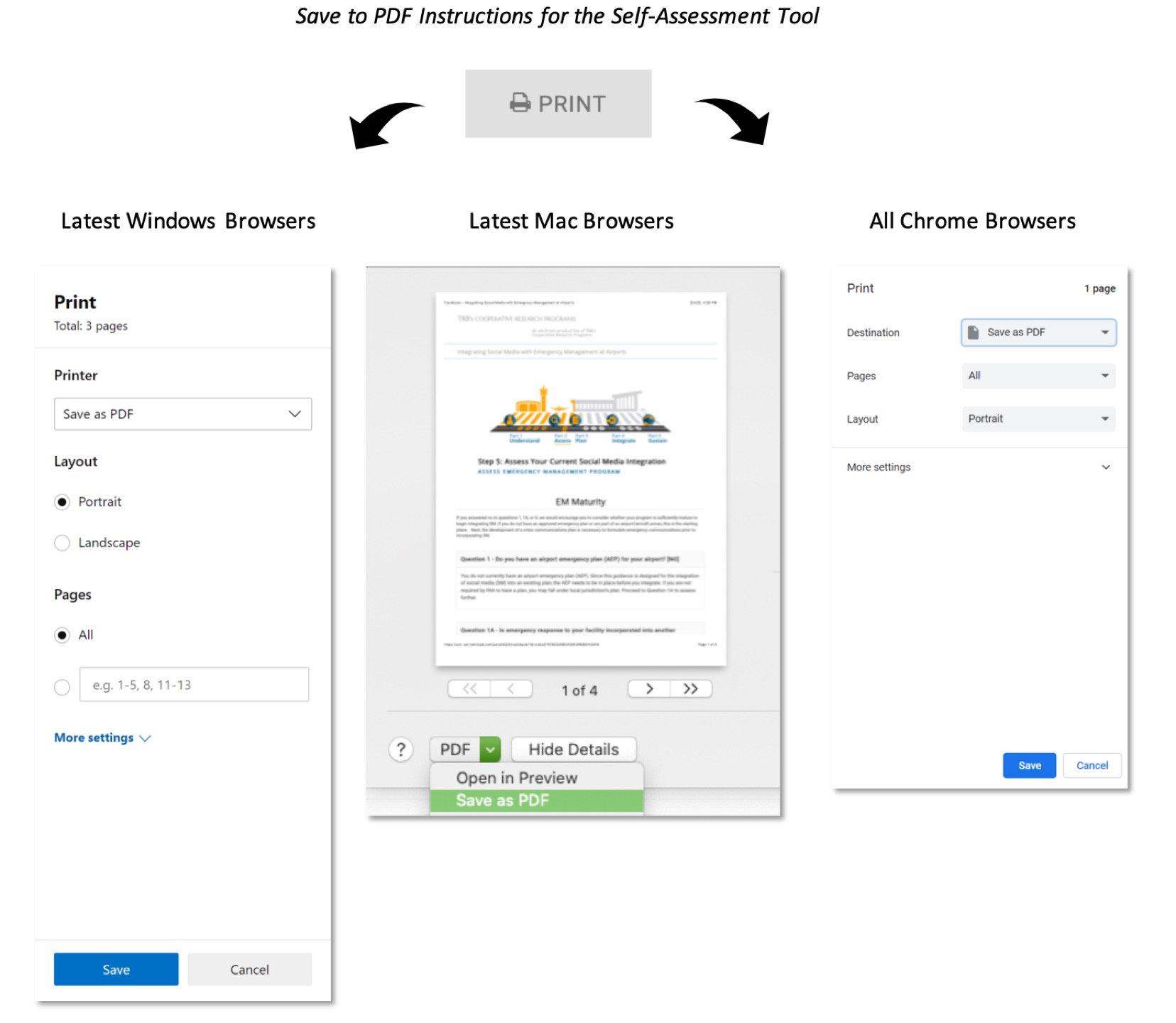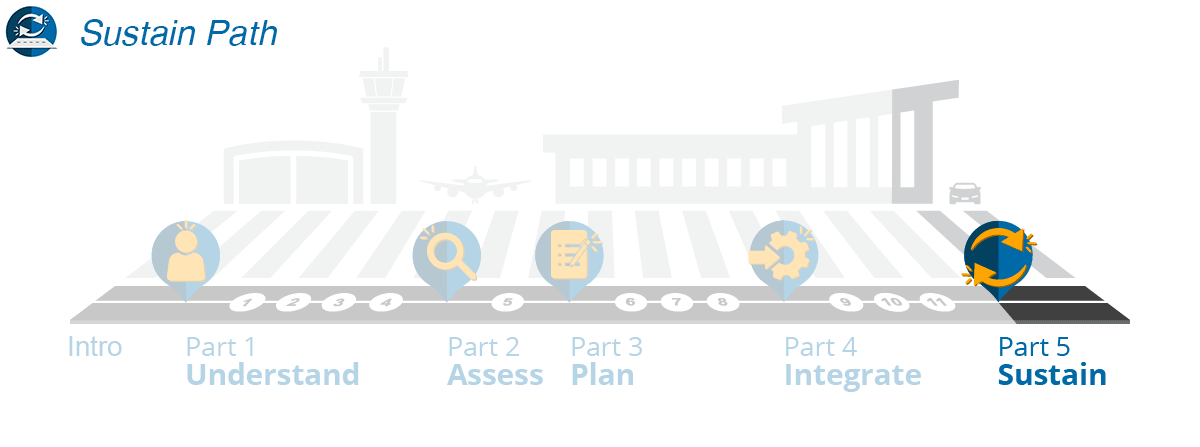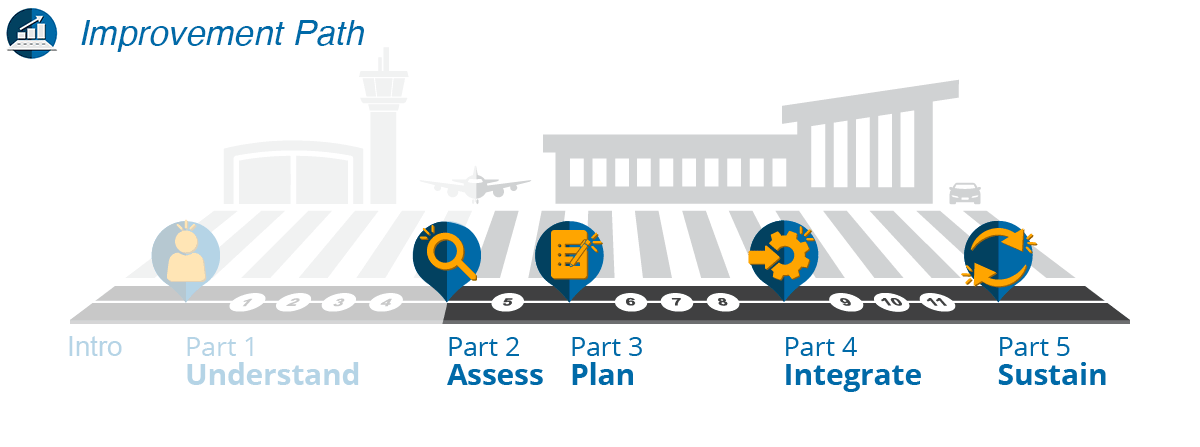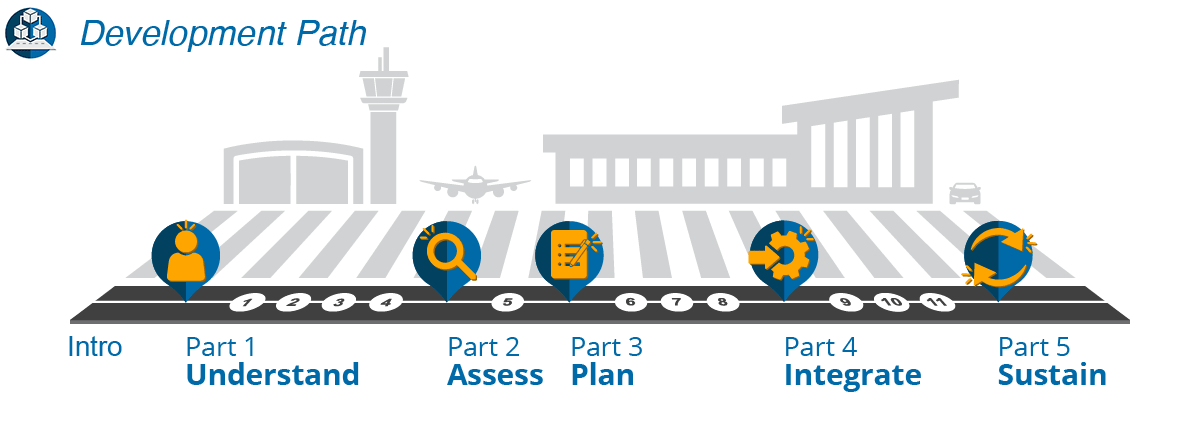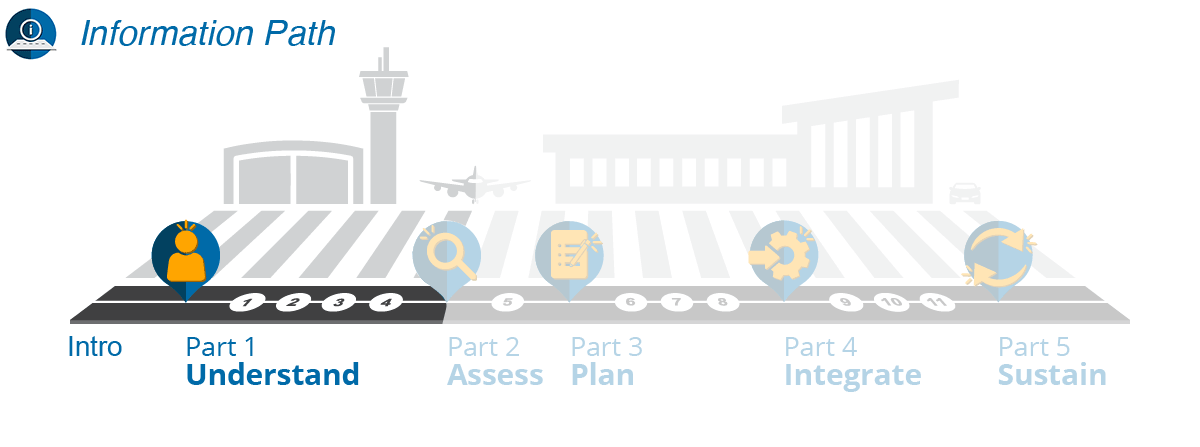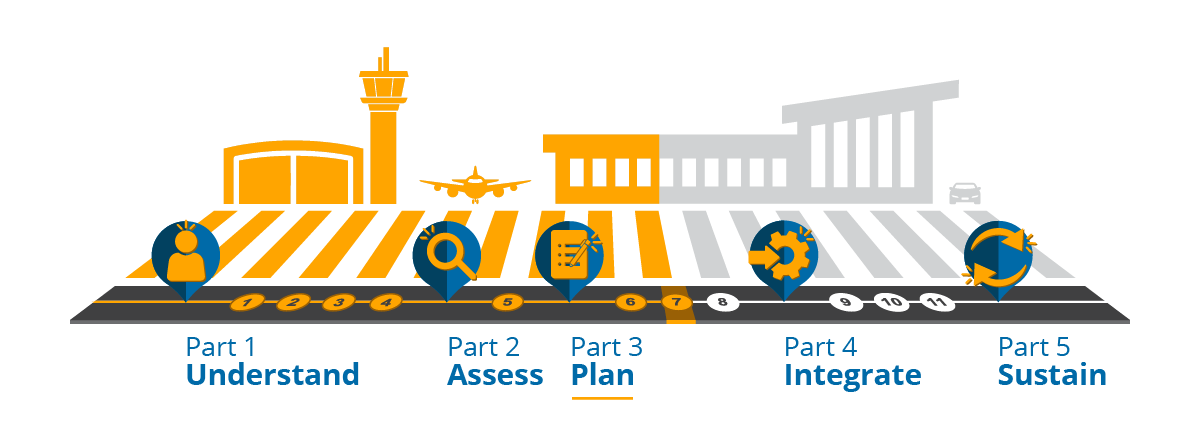
Step 7: Collaborate and Establish Your Vision and Objectives
Establish Shared Goals and Objectives
A shared vision for SMEM identifies the ultimate destination and defines the various waypoints along that journey. As your team works together through this process, individual community members/stakeholders may have differing and even conflicting goals and objectives. The SM and EM champions will need to identify and craft common goals and objectives without minimizing any stakeholder’s priorities.
The various individual goals and objectives of each community member/stakeholder should not be mutually exclusive. Take time to understand each perspective and look for the value that a successful integration can provide.
To understand the difference between goals and objectives and how both relate to a vision, you can consult any number of trusted online resources, including the following:
"Difference Between Goals and Objectives,” Key Differences, accessed September 16, 2019, https://keydifferences.com/difference-between-goals-and-objectives.html.
Develop Realistic Goals and Objectives
Based on the identified risks and the priorities set in the vision, the champions should work with all stakeholders to develop purposeful and realistic goals, as well as measurable and attainable objectives. In addition, these goals and objectives should be tied to airport emergency and crisis communication plans. This will help ensure your SMEM program is woven throughout your response planning.
For those new to SM, one of the first goals you set may be to understand your audience. Some objectives supporting this goal include identifying the exact demographics of your audience and determining the most valuable SM channels for your airport based on audience frequency of usage. If you know your audience, a great goal to set would be to increase your active listening during incidents/events and reporting information to public safety. Going further, you can consider establishing engagement with users at your airport. Objectives under that goal would include developing SM messaging templates or establishing a benchmark for how quickly you plan to respond. Always keep your vision in mind while staying within the limits of your resources.
As you develop your goals and objectives:
- Choose goals to stretch the team beyond what is currently being done
- Develop goals and objectives that are a good fit for your team and on which all stakeholders agree
- Ensure your goals and objectives are realistic and measurable, as this will allow you to evaluate them over time or for the life of an emergency event
The SMART approach is a proven method to establish measurable and attainable objectives to ensure goal achievement can be monitored. There are a many resources to help you develop SMART objectives that you can find through a simple web search. Two examples are the following:
“How to Create Achievable Social Media Goals,” Sprout Social, Inc., accessed September 16, 2019, https://sproutsocial.com/insights/social-media-goals/
“Develop SMART Objectives,” U.S. Department of Health & Human Services, Center for Disease Control & Prevention, accessed September 16, 2019, https://www.cdc.gov/phcommunities/resourcekit/evaluate/smart_objectives.html
In any case, the SMART approach includes the following five elements:
- Specific: the objective is clear, detailed, and well-defined.
- Measurable: there is a metric for indicating progress.
- Achievable: the objective is feasible.
- Realistic: necessary resources are available.
- Time-bound (sensitive): there is a defined timeframe.
While the "whole community" approach is important, in practical terms, the development of goals and objectives occurs first within the airport community because members of this community will be called upon to handle a majority of operations. For those working under a municipality, the development of goals and objectives would occur at the local or county level. In either case, the goals and objectives should be developed locally and then shared with state, regional, and federal community members to ensure proper collaboration during larger-scale events.
Once you have developed your goals and objectives, you will move on to the last planning step, Step 8: Define Your Social Media Integration. In this step you will identify what level of integration you are seeking based on your goals and objectives and considering your level of resources. From there, you will start integrating your SMEM roadmap with Step 9: Establish Your Integration Needs, which guides you in defining roles and responsibilities, policies and agreements, and success measures for your objectives. All these steps will lead you to be able to establish your SM operating framework (Step 10), which includes formalizing your information, reporting, and sharing requirements.
SUPPLEMENTAL READING
Next Steps: Social Media for Emergency Response, Department of Homeland Security (Washington, D.C.: 2012), https://www.dhs.gov/sites/default/files/publications/Virtual%20Social%20Media%20Working%20Group%20VSMWG%20Next%20Steps%20Social%20Media%20for%20Emergency%20Response.pdf
